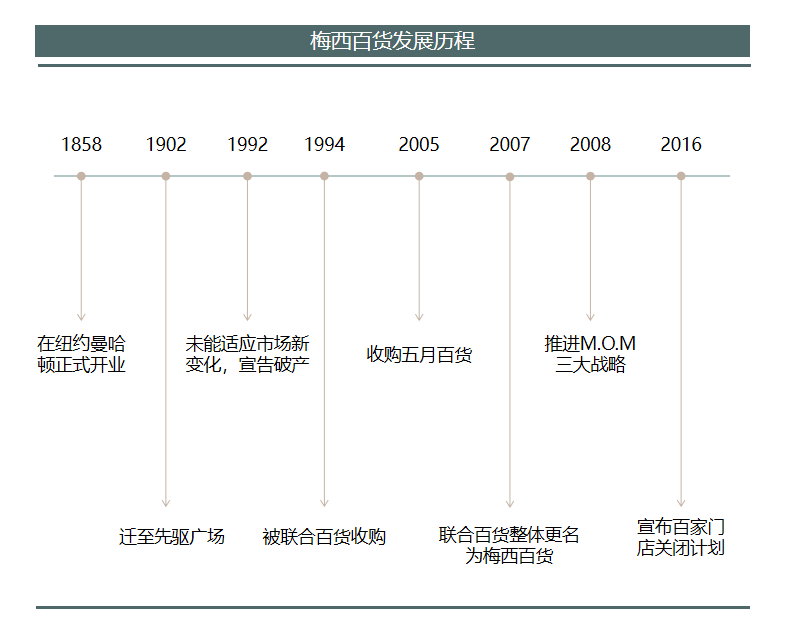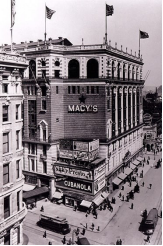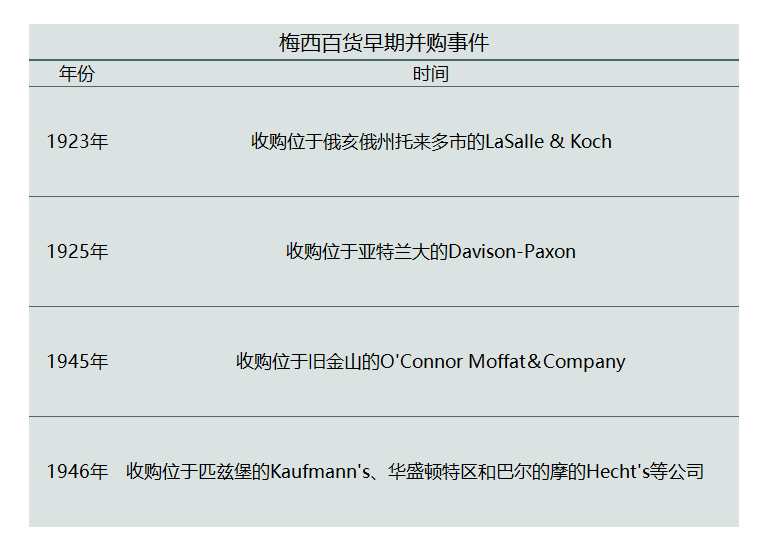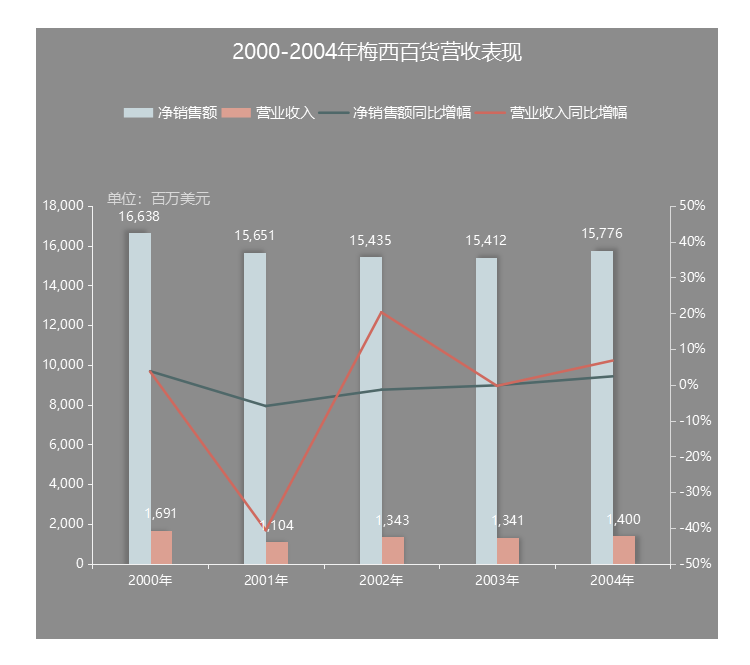At the end of the year, the company’s annual sales had reached approximately $ 85,000.

Source | China Merchants Securities Cartography | Commercial Real Estate Headlines
In 1902, the RH Macy & Co. grocery store was relocated to Herald Square in New York and renamed “Macy’s”. After the completion of Seventh Avenue in New York in 1924, the store was hailed as the “world’s largest” physical super department store.

Image Source | Macy’s Official Website
After the rise of the brand flag, Macy’s completed several initial acquisitions in the United States through several acquisitions:

Data source | Public data collection and mapping | Commercial real estate headlines
After the Second World War, the business process in the United States was pushed to a climax: cars gradually became popular and suburbs flourished; demographic change, rapid growth of retail, and department store sales soared.
Macy’s has integrated horizontal expansion through early mergers and acquisitions to reduce costs and increase efficiency with scale advantages. Therefore, during this period of high-speed growth, department stores have become industry giants.
By the late 1970s and early 1980s, Sears’ annual revenue accounted for 1% of US GDP (now Amazon also only accounts for 0.8%), becoming the world’s largest department store retailer, followed by Macy’s. At the time, Wal-Mart was just a regional supermarket in the Midwest.
In the 1980s, emerging sub-sectors such as chain stores, supermarkets, and warehousing member stores sprang up, sweeping the US retail market, threatening the status of department stores, and market share was subsequently divided.
Under the fierce competition, the US retail industry has entered the era of large mergers. From 1981 to 1989, the number of Wal-Mart stores increased from 491 to 1,528 (data from Wal-Mart officialsNetwork), the stock price has increased by 45 times in ten years.
In 1990, Wal-Mart surpassed department store giant Sears to become the No. 1 retail giant in the United States. In the 1990s, the boom of warehouse-type membership supermarkets made Costco’s stock price rise 649% in ten years, and Wal-Mart’s stock price also rose 1034%.
Facing the offensive of business players, Macy’s is as calm as an “outsider” and still adopts its thinking in the first round of expansion. It has successively copied department stores in Florida, Houston, and New Orleans Stores, trying to “win by volume.”
It ultimately missed the opportunity to develop other segments, and lost in the face of the downward cycle of the department store industry.
In 1992, Macy’s declared bankruptcy for failing to adapt to new market changes. On the eve of Christmas 1994, it was reorganized by Federated Department Stores, which it had intended to acquire.
Union Department Store’s investigation found that Macy’s early marketing strategy has earned him brand reputation, and the store will continue to operate under the name of Macy’s.
After this acquisition, Macy’s has bucked the trend and its net sales have increased from US $ 7.08 billion in 1992 to US $ 15.05 billion in 1995.
2. Closing stores, staggering performance
After the millennium, online sales have broadened the retail channels in the United States. The government has relaxed restrictions on multiple industries, and the stock market has risen. A new round of reshuffles has come.
The traditional department store industry bears the brunt of mergers and acquisitions. Since 2000, the performance of Macy’s Department Store has started to decline again, and its revenue has been negative for several times. In 2001, it reached -34.7%, and its 2002 net profit fell by 396.4% year-on-year.

Data source | Company announcement drawing | Commercial real estate headlines
Has shrouded in gray, Macy’s has a hard time. Therefore, in August 2005, it acquired May Department Store, including about 500 regional department stores and about 700 wedding dress shops, with a view to improving scale effects to guide corporate transformation and change adversity.
After the completion of the acquisition, Macy’s has reached approximately 900 stores, and its revenue has increased by 41.9% to US $ 22.39 billion, and its market value has also increased substantially.

